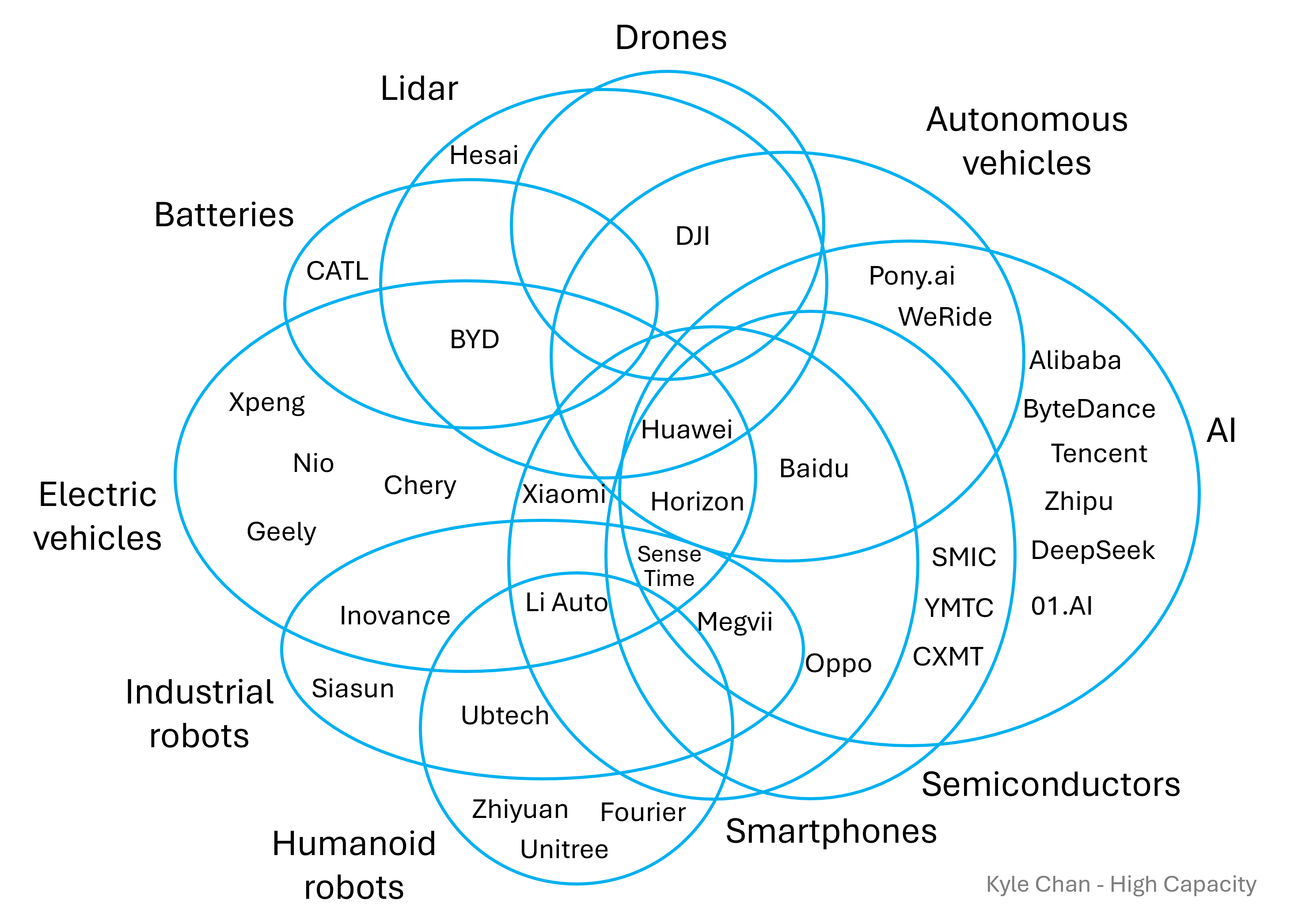China still doesn't have a world-class chip industry but Huawei says that changed this month.
We shall see. For the rest of it, quite an accomplishment.
From High Capacity, January 22:
EVs, batteries, lidar, drones, robotics, smartphones, AI. China's progress across a range of overlapping industries creates a mutually reinforcing feedback loop.

China has developed multiple tech-industrial ecosystems that overlap in terms of the firms and technologies involved. China doesn’t just have a smartphone industry or a battery industry or an electric vehicle industry. It has all of these industries and more. China’s strength across multiple overlapping industries creates a compounding effect for its industrial policy efforts.
Let me first explain what I mean in general and then look at the specific case of China’s EV industry. If you’re trying to develop a target industry, it helps to have the technology and manufacturing capacity in surrounding industrial domains. To expand on an analogy from Dylan Patel on ChinaTalk, industrial policy is like a jigsaw puzzle. The more pieces you already have in terms of technology and domestic manufacturing capacity, the closer you are to filling in the remaining gaps. And if you’re already strong in multiple overlapping industries, then this creates a mutually reinforcing feedback loop that further strengthens your position in all of these connected industries.
Put another way: China has created a system of interlocking industries. As China becomes stronger in some industries, this tightens its grip on others. What are the mechanisms by which overlapping tech-industrial ecosystems create this compounding or spillover effect?
Supply: Having existing domestic suppliers in upstream industries can make it easier to source parts and work directly with suppliers to modify specifications to suit industry needs.
Demand: Having an existing set of domestic buyers in downstream industries can provide a ready source of market demand and industry revenue. If downstream players are unwilling to buy domestically, they can be pushed to do so with policy measures, such as tariffs on foreign suppliers and local content requirements.
Technology: Technical knowledge and manufacturing know-how can be useful across industries. Investments in R&D and manufacturing techniques in one industry can have returns across other related industries. For example, knowledge of polysilicon production is useful for photovoltaic cell and semiconductor chip manufacturing. Being able to make inverters is useful for solar, EVs, railways, and telecom equipment.
Scale: If you have a product that’s an input for multiple industries, then having all of those industries domestically allows for greater economies of scale for that product. For example, China’s lithium battery industry can enjoy even greater economies of scale by supplying to China’s consumer electronics, EV, and energy storage industries.
....MUCH MORE